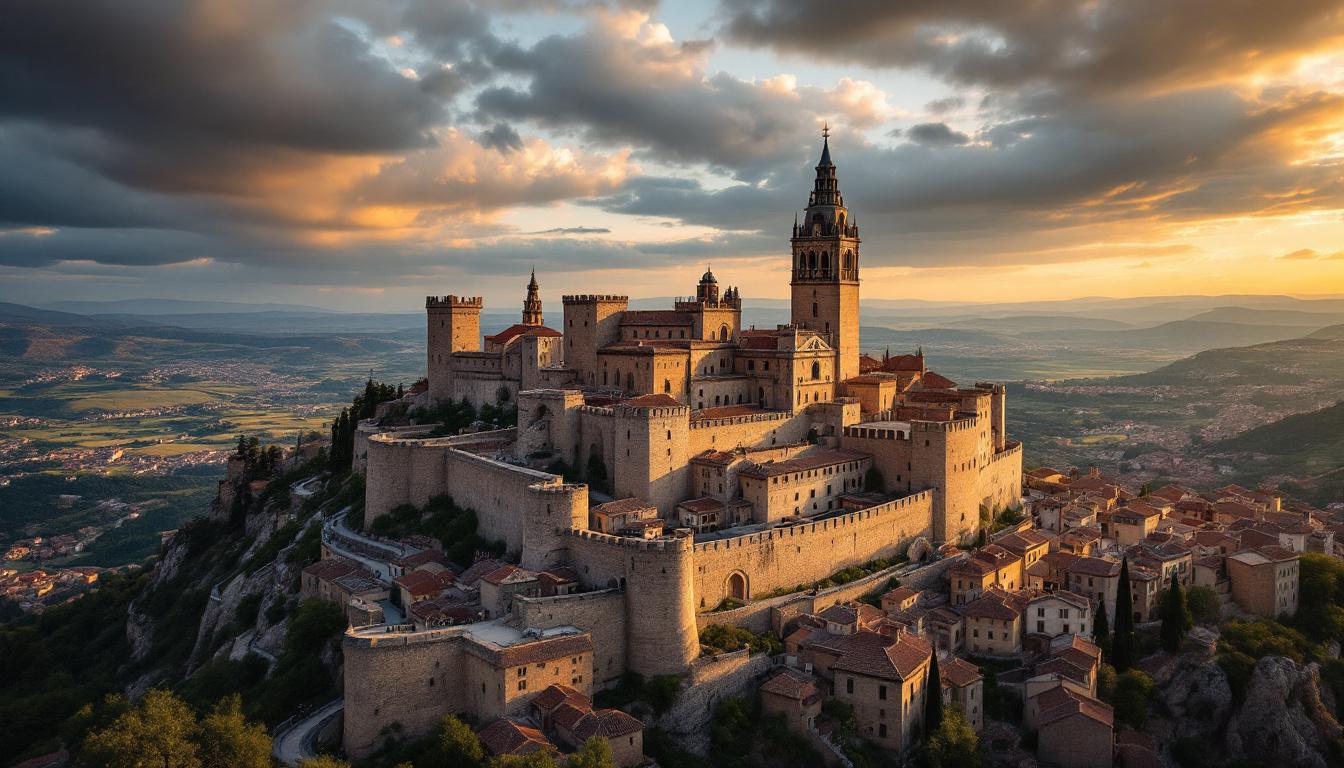Perched dramatically on a limestone hill nearly 1,000 meters above sea level, Morella commands attention with its impressive silhouette against the Spanish sky. This medieval fortress town in Castellón province isn’t just another pretty Spanish village—it’s one of the most perfectly preserved medieval settlements in Europe, where centuries-old defensive walls stretch for 2.5 kilometers, encircling a town frozen in time.
A living museum within ancient walls
Morella’s imposing defensive walls—reaching heights of 15 meters and featuring 16 towers—have protected this strategic hilltop settlement since the 14th century. Unlike many European destinations where history feels curated for tourists, here the medieval architecture serves as the backdrop for everyday life. Locals still conduct business in buildings dating back to when knights roamed these cobblestone streets.
“What makes Morella special is that we aren’t living in a museum—the museum is living in us,” explains María Fernández, whose family has operated a traditional bakery in town for seven generations. “These stones have witnessed fifteen centuries of history, but they’re still part of our daily lives.”
The castle that witnessed empires rise and fall
Crowning the town at its highest point, Morella Castle offers a sweeping panorama that instantly explains why this location has been fought over since Roman times. The fortress has changed hands between Romans, Moors, and Christians, with each civilization leaving its architectural mark. For just €5, visitors can explore ruins that span over 1,500 years of military engineering and enjoy what might be the most spectacular viewpoint in the entire region.
The basilica hiding artistic treasures
While the castle draws immediate attention, the Basilica of Santa María la Mayor contains Morella’s true cultural riches. This Gothic-Baroque church showcases extraordinary artistic elements, including a remarkable spiral staircase to the choir that seems to defy gravity. Art historians travel from across Europe to study its ornate facades and the religious artwork housed within its cool stone walls.
The basilica stands as evidence of the town’s historical importance—such architectural splendor would typically be found only in major European capitals, not a remote mountain settlement like this medieval fortress city.
Beyond tourist trails: authentic experiences
Unlike other Spanish medieval cities that have become overrun with tourists, Morella maintains its authentic character. Early mornings reveal local shepherds bringing their sheep to graze just outside the walls, while traditional shops still sell regional delicacies like black truffles, artisanal cheeses, and honey harvested from nearby mountain slopes.
“Visitors who wake up early enough might catch the morning ritual of shopkeepers washing their storefronts with scented water—a tradition dating back centuries,” notes local historian Antonio López. “These small moments reveal Morella’s soul better than any guidebook.”
A culinary journey through time
Morella’s isolation has preserved culinary traditions lost elsewhere. Restaurants serve dishes like “ternasco” (Morellan leg of lamb) and “gallina trufada” (truffled hen) prepared using recipes passed down through generations. Unlike trendy island destinations, dining here connects you directly to the agricultural rhythms that have sustained this community for centuries.
Beyond the walls: natural wonders
The countryside surrounding Morella offers spectacular hiking and cycling opportunities through limestone landscapes dotted with ancient hermitages and olive groves. Unlike Caribbean destinations, the beauty here lies in subtle details: wildflowers growing from medieval walls, the play of light across stone facades, and panoramic vistas that have remained unchanged for centuries.
Walking in pilgrim footsteps
Like certain French villages, Morella has deep connections to ancient pilgrimage routes. The town’s position along historical trading and religious paths has shaped its development, with narrow streets designed to accommodate medieval travelers and their pack animals. Today’s visitors walk the same routes, experiencing history through their footsteps.
Morella doesn’t just display history—it embodies it. In a world where authentic experiences become increasingly rare, this Spanish fortress town stands as a testament to preservation without petrification. Here, medieval life continues, not as a performance for tourists, but as the natural evolution of a community that has thrived for over fifteen centuries perched dramatically between earth and sky.
